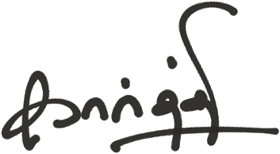This week in the product book club, we are reading The Art of Doing Twice in Half the Time by Jeff Sutherland. I first found this book in 2015 and I must say, it changed my life for better. I am not surprised if you are wondering, why is a designer saying such a thing about a project management book? 😉 Let me explain.
In my world, (design) work never ends. There is no end to the enhancements I could add to an existing design. The never-ending nature of design not only keeps my creativity ON but also robs my sanity. In my experience, the typical project management methodologies did more harm to design teams than good. In 2012, I discovered Scrum as a project management methodology, and my work was never the same again.
As a productivity nerd, I was fascinated by the exponential productivity my team showed when I used Scrum. For the first time, in a long time, I was happy despite a long list of things we could do to make design awesome. The incremental approach to work truly helped me and my teams focus. I saw how a small team could deliver so much more than large teams. I loved how the constant assessment of progress and an adaptive approach to problem solving helped me propel my design career. In 2016, I invented my own project-product framework to apply the first principles of scrum to all thing's work and life. From that space I am writing this book notes. Read this as a musing of a behavioural scientist than a project manager.
Pick this book to understand the why behind Scrum and not the how. The stories and anecdotes of the book, help you internalize the why better. In this book, Jeff argues that Scrum can be used to build anything and not just software. I agree. I use the first principles of Scrum to build all things work and life. Scrum can be used to build anything. It has the potential to transform the way you work, plan, create and think. It can be used in virtually any industry.
Here are my synthesized first principles from the book. If you don't have time to read the entire book, tune in your next 7 mins and get the most out of the book here. The next best thing to do it is to read the book yourself (it takes 4 hours).
It is human to seek certainty. Planning helps seeking certainty and hence it is so tempting to draw up detailed endless charts (remember Gantt charts😉). But when the plan meets reality, they usually fall apart. The reason being, reality changes constantly, we learn new things and make new discoveries and we come up with new ideas on the go. Include change, discovery, new ideas, learnings into your working method.
It is human to resist change. Command & control brings in rigidity, predictability and certainty. This makes us put more weight on process, procedures, forms and meetings than on the visible value creation. Doing work that does not produce real value is waste. By stopping every once in a while, reviewing what you have done, reflecting on what you should be doing, thinking about how you can do it better helps in eliminating wasteful efforts in short cycles and keep making progress in the right direction.
Venturing into unknown terrain is hard. As human beings we hesitate. To go past hesitation use OODA (Observe, Orient, Decide and Act). Know where you are, assess all options, make a decision and put in action. Continuous improvement comes by going past hesitation.
It is easy to dismiss Scrum as another fad. Instead, look at Scrum as a way of life. When it is instilled as a way of being, it reflects in your way of doing as well. Follow Shu Ha Ri. Shu Ha Ri is a Japanese concept that points to different levels of mastery.
In Shu state, you know all the rules and the forms. You repeat them and you don't deviate at all.
In the Ha state, you start making innovations after you've mastered the forms. This is where you add a dash of your own to the existing form.
In the Ri state, you have truly mastered the practice and you are able to create in unhindered ways. The knowledge is deeply embedded in you that you can discard the forms and just be. You embody the essence, and your every step shows it.
It is human to blame. Stop looking for bad people and start looking for bad systems. Eliminate systems that incentive bad behaviour and reward poor performance. Build high performing teams to deliver transcendence and not just a project. Give them autonomy. Remove impediments on their way. Celebrate small wins. Keep the teams smaller (less than seven is ideal).
We work as if time is infinite. Treat time as a finite resource. Break down work into what can be accomplished in a short period (2-4 weeks). Showcase your work. Stop giving updates. Make everything transparent to everyone. Be known for what you do (and not what you are called as). Check-in once a day and that should do the magic.
Fix all stupidities first and then start performing.
Doing more than one thing at a time is stupid. It slows you down.
Work in progress is waste. Half done is not done.
Once it is a learning opportunity. Twice is a mistake. Fix the mistakes right away. Fixing later will take more time and resources.
Working too hard makes work harder. Work in a sustainable pace. Avoid fatigue and burn outs.
Challenging goals are motivators. Unrealistic ones are depressors. Choose wisely.
If you need a hero to get things done, then you have a serious problem.
All things that stands in between real work must be eliminated (approvals, forms, standards, meetings etc).
Humans are terrible at estimation. Don't fall into this trap of estimating in absolute terms. Use planning poker to quickly estimate work that needs to be done. Just enough planning will do. You don't have to plan for years in advance. Above all, don't fall in love with your plan. Almost always, map is not a terrain.
We are not rewarded for enjoying the journey itself but a successful completion of the journey. Society rewards results, not processes. Arrivals, not journeys. But our day-day is made up of journeys only. It is all about striving towards the goal every day. We are happy when we focus on journeys. When we are happy, we make better decisions, more creative and have more agency to get things done. Happiness is a pre-requisite and not an aftermath.
A leader isn't a boss. Leaders take accountability. A product owner sets the vision and converts the vision into a backlog. The team decides how to accomplish the vision. When in trouble, the product owner calls the shots and makes final decisions. Takes accountability for delivering value.
All men dream; but not equally. Those who dream by night in the dusty recesses of their minds wake in the day to find that it was vanity: but the dreamers of the day are dangerous men; for they act their dreams with open eyes, to make it possible. - T.E. Lawrence, Seven Pillars of Wisdom
Change is hard but you can change things. You don't have to accept the way things are. Don't listen to cynics who tell you what can't be done. Amaze them with what can. This book gives you knowledge that change is possible and that too in the most productive way possible.
🥂 to changing the world!

